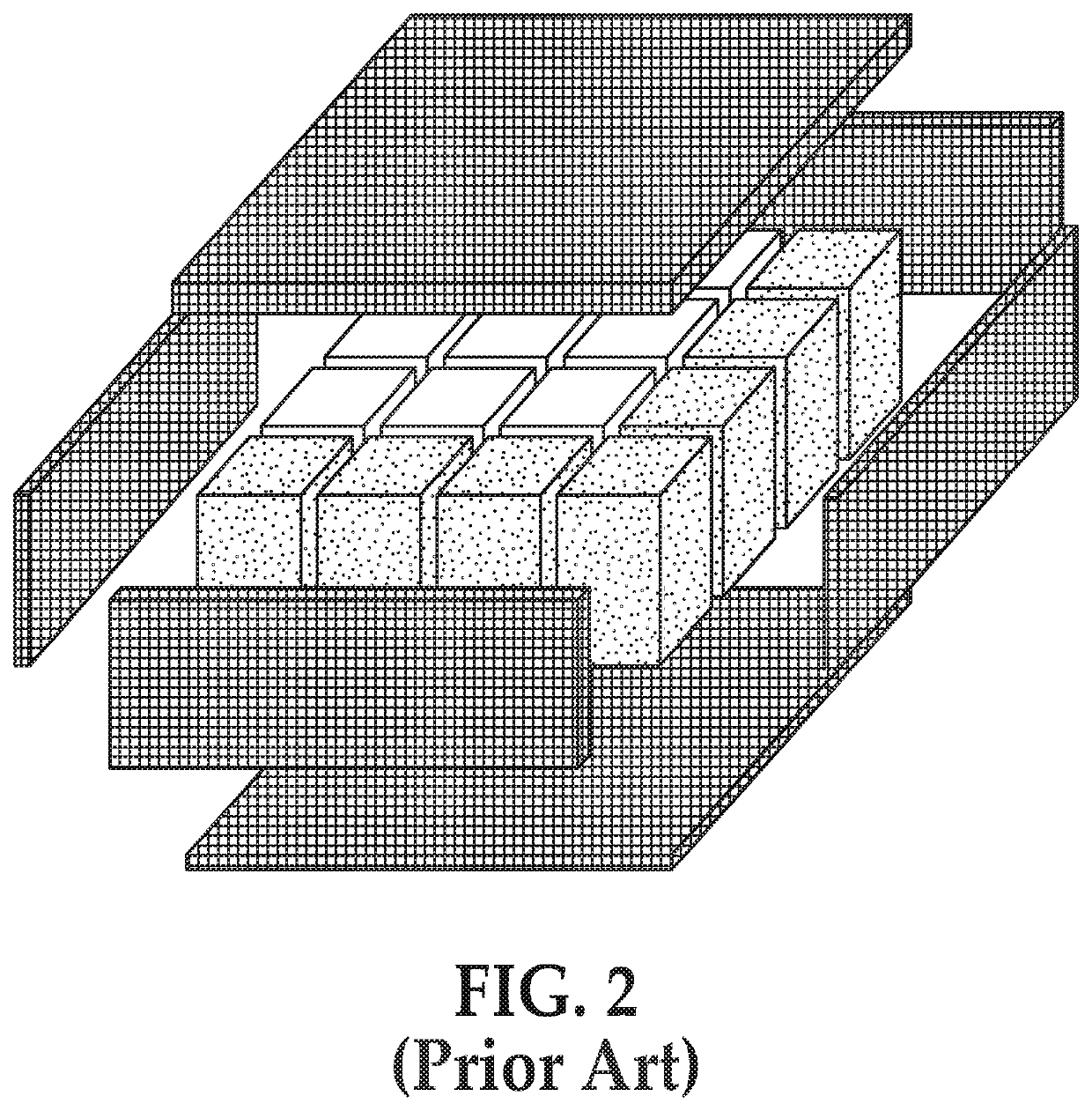Semi-conductor wafers longer than industry standard square
a technology of semi-conductor and square, which is applied in the direction of conveyor parts, final product manufacturing, transportation and packaging, etc., can solve the problems of very small cost of additional silicon, and achieve the effects of small cost, small amount of additional surface area, and fast processing speed
- Summary
- Abstract
- Description
- Claims
- Application Information
AI Technical Summary
Benefits of technology
Problems solved by technology
Method used
Image
Examples
Embodiment Construction
[0071]Certain processing schemes and architecture are disclosed in U.S. Pat. No. 8,293,009B2, titled Methods For Efficiently Making Thin Semiconductor Bodies From Molten Material For Solar Cells and the Like, inventors Emanuel M. Sachs et al., assigned to 1366 Technologies Inc., which issued on Oct. 23, 2012, and additional patents related thereto, including U.S. Pat. No. 8,696,810, issued on Apr. 15, 2014 and U.S. Pat. No. 9,643,342, issued on May 9, 2017. The above-mentioned patent disclosures are hereby incorporated fully herein by reference. The technology disclosed in the above referenced patents is referred to herein collectively as Direct Wafer (DW) technology.
[0072]Aspects of the invention disclosed herein relate to wafers that are of an industry standard size along one dimension, referred to herein as their width w, and which are longer along the dimension that is perpendicular to the standard size width, referred to herein as the wafer's length nL. The industry standard re...
PUM
| Property | Measurement | Unit |
|---|---|---|
| length size | aaaaa | aaaaa |
| size | aaaaa | aaaaa |
| size | aaaaa | aaaaa |
Abstract
Description
Claims
Application Information
 Login to View More
Login to View More - R&D
- Intellectual Property
- Life Sciences
- Materials
- Tech Scout
- Unparalleled Data Quality
- Higher Quality Content
- 60% Fewer Hallucinations
Browse by: Latest US Patents, China's latest patents, Technical Efficacy Thesaurus, Application Domain, Technology Topic, Popular Technical Reports.
© 2025 PatSnap. All rights reserved.Legal|Privacy policy|Modern Slavery Act Transparency Statement|Sitemap|About US| Contact US: help@patsnap.com



